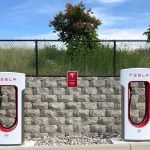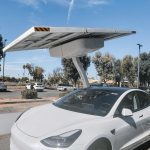California’s electric vehicle landscape is seeing a policy shift that may affect both consumers and market dynamics. Governor Gavin Newsom has decided not to reinstate the state’s electric vehicle (EV) tax credit, which many buyers had anticipated as the federal benefit nears expiration. Instead, he signaled a new direction: investing state funds into the expansion of EV charging infrastructure. This development raises questions about how consumer adoption rates and automaker strategies will adjust as the state pursues a different approach to growing its clean transportation sector. California’s decision arrives as manufacturers like Tesla and General Motors look to maintain momentum in the country’s most influential EV market.
Within the last two years, discussions around EV incentives frequently centered on expanding access to rebates and credits as key tools to boost adoption. Earlier hints from state officials suggested a return of the California EV tax credit was possible, especially as federal benefits were expected to wind down. Since then, shifts in both state priorities and federal policy have led to a focus away from direct buyer incentives. The state remains a leader in EV adoption, yet the withdrawal of consumer rebates contrasts with moves in other regions that seek to preserve or extend purchase incentives for zero-emission vehicles.
Why is California shifting its strategy?
Governor Newsom, while presenting the new direction at a climate-focused event, explained that resources from the cap-and-trade program would now support expanding EV charging infrastructure rather than providing financial rebates to car buyers. This marks a break from previous approaches where consumer incentives played a larger role. Newsom explained the rationale by underscoring limits on the state’s ability to compensate for diminished federal support.
“We can’t make up for federal vandalism of those tax credits,”
he said. Energy will now be directed toward longer-term investments designed to make EV ownership more practical across California’s diverse geography.
What does this mean for automakers and consumers?
Industry analysts note that the absence of state-level rebates could temper demand, particularly among cost-sensitive buyers. However, strong sales of high-profile models like the Tesla Model Y suggest that mature brands can draw customers even as incentives decline. Newsom also addressed automakers, specifically criticizing General Motors and CEO Mary Barra for resisting the state’s move toward a 2035 ban on new gasoline cars. He called out Detroit automakers for what he framed as a lack of support for California’s emission reduction efforts.
“There are billions and billions of dollars through 2045 in the cap-and-trade program that continue to make those infrastructure investments, but not the direct subsidies, that we cannot make up for, that were eliminated under the federal program,”
Newsom stated.
Could charging improvements outweigh the effects of lost incentives?
Proponents of the shift argue that reliable charging access is fundamental for supporting widespread EV use. California’s sizable share of national EV sales demonstrates existing interest, but market watchers question whether momentum can be sustained purely through infrastructure improvements. The Advanced Clean Cars II legislation, which requires sales of only new zero-emission vehicles by 2035, continues to chart the state’s long-term direction. Critics argue that without financial incentives, reaching future adoption targets might become more challenging for some households.
Redirecting focus from direct rebates to network improvements reflects practical realities in state budgeting and changing federal policy. While access to charging will likely alleviate some barriers to EV ownership, price sensitivity among buyers may persist, particularly as incentives fall away. The trajectory of brands like Tesla, whose Model Y has maintained strong sales, suggests that product quality and brand loyalty are important, yet not a full substitute for accessible pricing. Other states and countries are taking varied approaches, with some doubling down on buyer incentives, showing that no single path guarantees optimal EV adoption. Those interested in purchasing an electric vehicle in California will need to weigh the costs and benefits of advanced infrastructure against fewer financial incentives. For many, expanding charging options may ease daily use, but initial affordability remains a pressing consideration in the transition to cleaner transportation.
- California cancels its EV tax credit revival plan.
- State funding will develop charging stations instead of rebates.
- Automakers and buyers anticipate shifts in California’s EV landscape.









